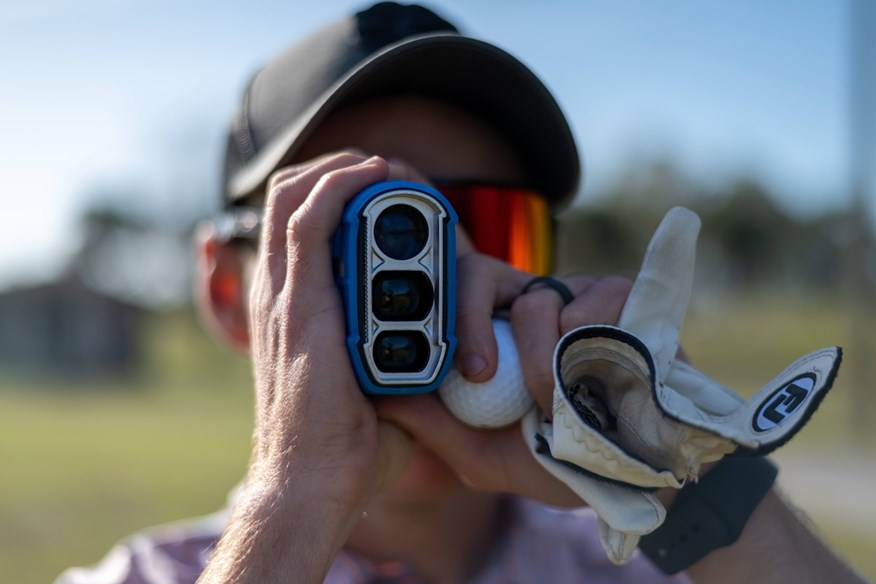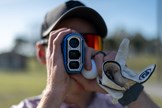What is the slope function in a rangefinder? (And should you use it?)
Last updated:
Distance-measuring devices are now allowed in some tour events. But the slope function is causing some issues. So what is it? Is it allowed? And should you by a rangefinder that has it?
The PGA Tour’s recent decision to combat slow play by allowing players to use rangefinders has had mixed reviews from all corners of the game. It’s nothing new, of course. The PGA of America have allowed it in their tournaments – including the PGA Championship – for years.
But one feature, in particular, is the slope function – and that’s what we’re here to talk about today.
It’s the one thing tour players are not allowed to use, and Davis Riley became the first player to fall foul of this rule at the 2025 CJ Cup when he played a shot before realizing the slope function was switched on.
So let’s clear up a few FAQs regarding the slope function in rangefinders…
What is the slope function?
Simply put, the slope function adjusts the straight-line distance to account for elevation changes between you and the target, such as the flagstick. It calculates the “play-as” distance based on whether you’re hitting uphill or downhill.
How does it work?
A rangefinder uses inclinometers – or angle sensors – to measure the degree of incline or decline and then uses that angle to adjust the distance accordingly.
So the “play as” distance on an uphill shot will be longer than the straight-line distance, while on a downhill shot it will be shorter than the straight-line distance.
For example, if you have 150 yards to the pin, but the green is downhill, the slope-adjusted distance might be, say, 140 yards. Now you can choose your club and shot accordingly.
Is it allowed?
In recreational golf, absolutely.
But if you’re playing in a club competition or, like Riley, a tour event, it absolutely must be switched off.
The Rules of Golf say: “Rule 4.3a allows the use of distance-measuring devices so long as the player does not access any information that is prohibited under this rule.”

What’s the penalty?
Back to the Rules of Golf we go.
“The first breach of this rule means the player gets a loss of hole penalty in match play or a two-stroke penalty in stroke play.
“A second breach of Rule 4.3 during the same round results in disqualification.”
It is also worth noting that a golf course or the committee in charge of a competition does have the option to prohibit the use of distance-measuring devices by Local Rule – so make sure you check before you tee off!
Should you buy a rangefinder with slope function?
Let me hand you over to our equipment editor Alex Lodge, who uses a rangefinder with the slope function on a regular basis.
He writes: “The slope function might not be something you’ve considered when purchasing a rangefinder, but with technology becoming more and more advanced it will be an element that you encounter if you’re looking to invest in the latest and greatest DMDs.
“The slope function itself is an incredibly useful asset for amateur golfers – in the right situation, of course. When turned on, it will tell you what the distance plays like, as opposed to overall distance. I love the fact that my rangefinder will tell me two numbers when I’m zapping the flag: the actual yardage, and the slope-adjusted yardage. This really helps me dial in my approach shots.
“This is particularly advantageous if you play on a hilly golf course, or if it features a lot of undulating holes, where the slope function come in handy to help you understand the true yardage to the hole and impacting what club you will use to make the best score.
“The only issue? As has been laid out above, this isn’t allowed in tournament play. You will likely encounter a shot that features undulation in every round of golf you play, so it’s helpful to have non-competition rounds where you can use the slope function to determine the slope readings before a tournament gets underway.”
What are the best rangefinders on the market?
We’re glad you asked.
TG’s team of gear experts have tested dozens of the latest golf rangefinders – and you can find the perfect one for you right here.


